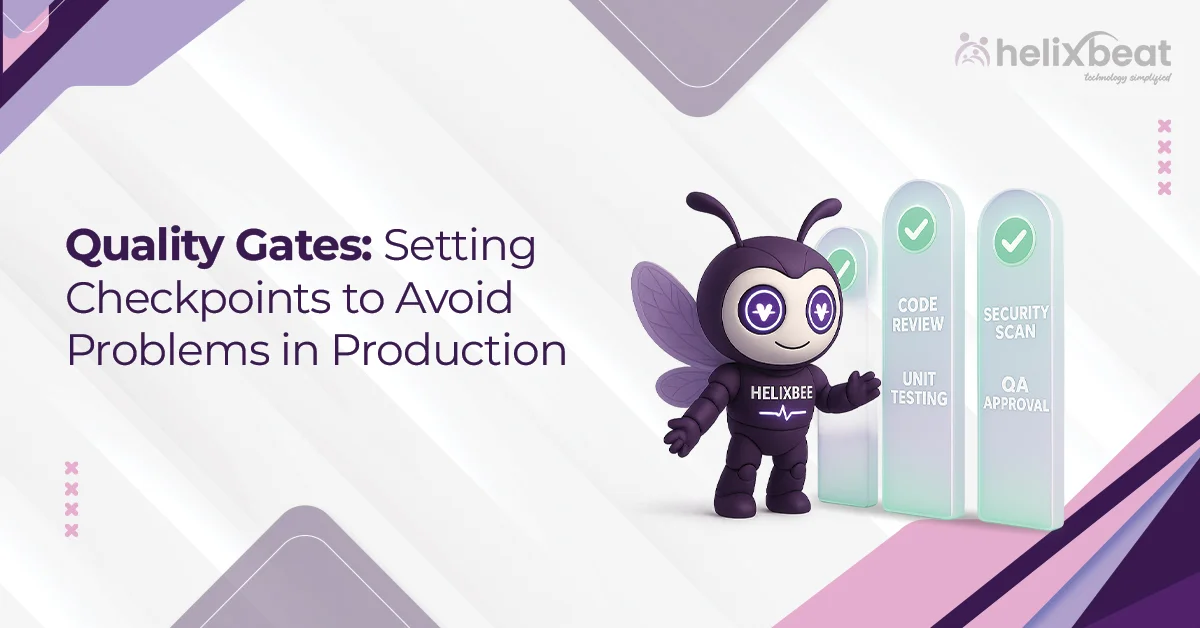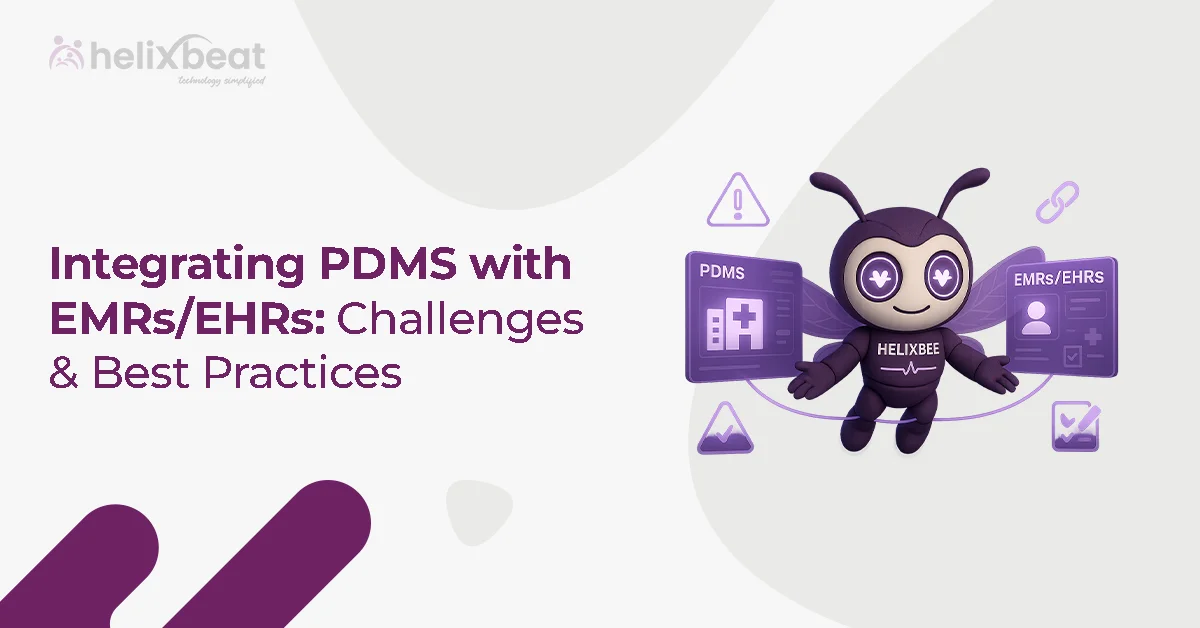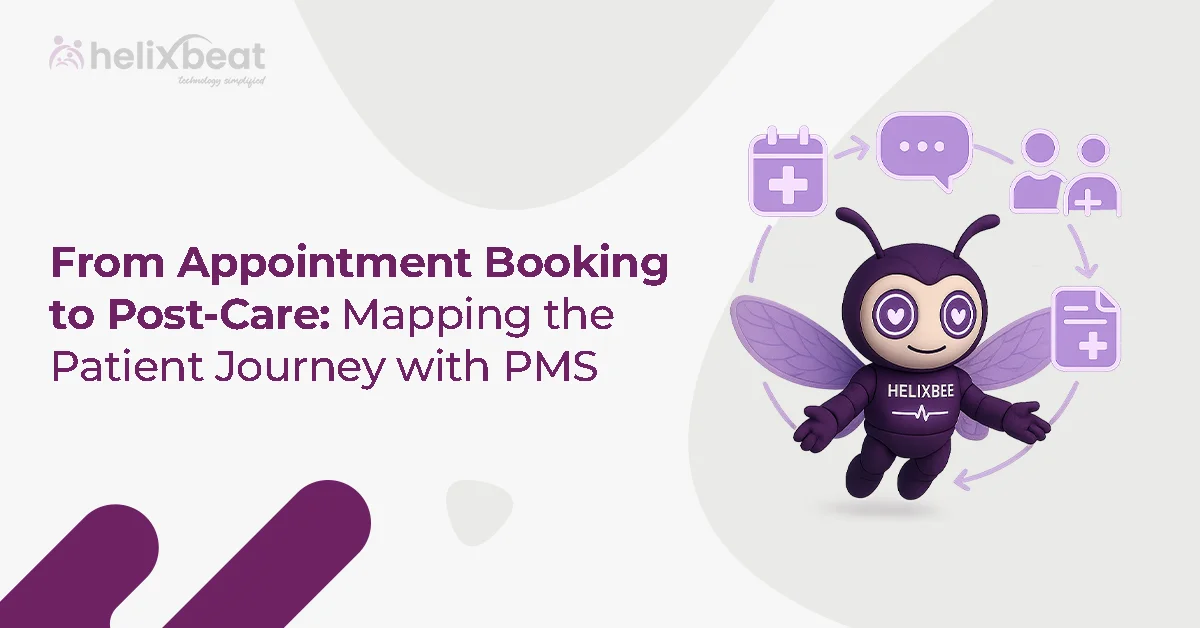These days, most businesses develop software, but issues in the final product can result in customer complaints, financial losses, and harm to their brand reputation. That’s why many businesses today use Quality Assurance Services to catch issues early, before the software reaches production.
One effective way to do this is by setting up quality gates. These checkpoints are placed at different stages of development. They make sure the code meets certain standards before moving forward. This helps your team release better software and fewer bugs.
According to a report by CISQ, poor software quality cost businesses in the U.S. over $2 trillion in 2020. A large part of that came from fixing production problems that could have been avoided with proper checks. Let’s see how quality gates avoid problems in production.
Table of Contents
What are Quality Gates in Software Development?
Quality gates in software development are predefined checkpoints set during the development process to check the quality of the code before it moves to the next stage. These gates are based on specific rules like code coverage, bug count, performance metrics, or security checks. If the code doesn’t meet these rules, it can’t proceed further.
This helps teams catch problems early, reduce rework, and maintain high standards. Many businesses use Quality Assurance Services to set up and manage these gates as part of their overall software quality assurance strategy, making sure only reliable, well-tested code reaches production.
The Working Process of Quality Gates
Setting up and using quality gates follows a structured workflow. Here’s how it typically works in a software development environment:
Step 1: Define Quality Standards
Start by identifying what quality means for your software. This includes setting rules like minimum test coverage, acceptable bug levels, security checks, and coding standards.
Step 2: Integrate Tools into Your CI/CD Pipeline
Use tools like SonarQube, Jenkins, or GitLab CI to integrate quality gates into your development pipeline. These tools automatically check the code at different stages.
Step 3: Apply Quality Gates at Key Stages
Place quality gates at important checkpoints such as after code is committed, during build, before testing, and before deployment. Each gate checks if the code meets the set standards.
Step 4: Block or Approve the Build
If the code passes all checks, it moves to the next phase. If not, the process stops, and developers must fix the issues before moving forward.
Step 5: Review and Improve Regularly
With help from a QA testing company or internal QA team, regularly update the quality gate rules based on new risks, tech changes, or project needs.
By following this step-by-step process and using the right QA testing services, businesses can maintain strong software quality assurance throughout the development cycle.
How to Add Quality Gates to Your Workflow
Adding quality gates to your software development process doesn’t have to be complex. With the right plan and tools, you can build a smoother, more reliable workflow. Here’s how to get started:
1. Identify Critical Stages in Your Development Pipeline
Start by mapping out your development cycle, such as code commit, build, testing, and deployment. Decide where you need quality checks the most. These stages will be your quality gate checkpoints.
2. Define the Gate Criteria
At each checkpoint, set clear rules that your code must pass. This might include:
- Minimum 80–90% unit test coverage
- No critical or blocker bugs
- Performance benchmarks (e.g., API response < 200ms)
- Security scan results with zero high-risk issues
3. Use Tools to Automate the Gates
Integrate tools like SonarQube, Jenkins, GitHub Actions, or GitLab CI to automate the gates. These tools automatically check your criteria at each stage and decide whether the build should proceed.
4. Set Up Notifications and Reporting
When a gate fails, your team should be notified instantly. Dashboards and reports help track quality trends and reduce time-to-fix.
5. Work with a QA Services Company
A reliable QA services company can guide you in setting up the right gates, choosing tools, defining meaningful metrics, and maintaining them over time. Their Quality Assurance Services also help keep your gates aligned with your business goals as your product evolves.
By adding quality gates to your workflow, you gain better control over software quality, reduce production risks, and ship with more confidence.
How Quality Gates Avoid Problems in Production
1. Detecting Defects Early in the CI/CD Pipeline
Quality gates are integrated into the Continuous Integration/Continuous Deployment (CI/CD) pipeline. This means every code commit is automatically checked against defined metrics like static code analysis, unit test coverage, and security vulnerabilities.
By identifying bugs or performance issues during the build or testing phase, quality gates prevent these defects from reaching production, saving time and reducing costly rollbacks. According to IBM, fixing a bug in production can cost up to 6x more than fixing it during development.
2. Enforcing Code Quality and Standards
Quality gates use tools such as SonarQube or ESLint to perform static code quality checks, ensuring that the code meets business-defined standards. These include clean coding practices, proper naming conventions, and optimized logic.
By rejecting low-quality code at the gate level, teams avoid introducing technical debt or unstable code that could fail in production environments. A study by CAST Software found that high-quality code can reduce system maintenance costs by up to 30%.
3. Validating Performance and Load Metrics
A key function of quality gates is to check if the software meets performance benchmarks under simulated loads. For example, before a deployment, quality gates may trigger automated load testing, stress testing, or latency analysis.
This makes sure that the software will handle real-world user traffic without performance bottlenecks or crashes, avoiding downtime after release. Gartner reports that 40% of users abandon websites that take more than 3 seconds to load, highlighting the impact of unchecked performance issues.
4. Ensuring Security and Compliance
Quality gates integrate security scans and vulnerability assessments into the workflow. These scans check for critical issues like SQL injection risks, cross-site scripting (XSS), and OWASP Top 10 vulnerabilities. Additionally, gates can enforce compliance requirements (e.g., GDPR, HIPAA).
This proactive security approach prevents breaches and compliance failures once the software is live. Verizon’s Data Breach Report states that 82% of breaches involved human error or insecure code that could have been prevented.
5. Preventing Unstable Releases with Automated Approvals
In modern DevOps pipelines, quality gates act as automated approval systems. If a build does not meet defined metrics such as a 95% unit test pass rate, zero critical bugs, or threshold response time, the deployment is automatically halted.
This safeguards the production environment from unstable or poorly tested releases, reducing customer impact and improving overall software reliability. DORA research shows that elite software teams with automated release gates have 46x more frequent code deployments and 7x lower change failure rates.
Example of Quality Gate Implementation in Software Production
A mobile banking app was being developed by a fintech company. To avoid problems after launch, they teamed up with a QA testing company to set up quality gates throughout their development process.
Here’s how they did it:
- After code commit: The gate checked for proper code formatting and no high-severity bugs.
- After build: The system made sure the code compiled without errors and passed basic unit tests.
- After testing: Automated tests checked for over 85% unit test coverage and zero critical security issues.
- Before deployment: The app was checked for API response time under 200ms and compliance with PCI DSS (a financial security standard).
During one sprint, the gate in the testing stage caught a memory leak that could have caused the app to crash under heavy use. Because of the quality gate, the issue was fixed before it reached users.
These checkpoints, supported by Quality Assurance Services, helped the company avoid a costly failure, release a stable app, and keep their customers happy.
Final Words
Building software is not just about writing code; it’s about making sure that the code works well and doesn’t break in production. That’s exactly what quality gates help you do. They serve as smart checkpoints that catch issues early and ensure a smoother software launch.
If you’re not sure how to set up these gates or if you want to make your testing process stronger, Helixbeat’s Quality Assurance Services can help.
Our team will work with you to add quality checks at the right stages, set up tools that automatically test your code, and keep your software running at its best. Whether you’re a startup or a growing business, we make sure your product is reliable before it goes live. Book a free QA consultation with Helixbeat.
FAQ:
1. What is QA as a service?
QA as a Service (QAaaS) is an outsourced model where a company hires external experts or a third-party team to handle all or part of its software testing and quality assurance process.
2. What are the five functions of quality assurance?
The five key functions are:
- Requirement analysis
- Test planning
- Test execution
- Defect tracking
- Reporting and improvement
3. What is the QA process?
The QA process includes planning tests, writing test cases, running them, finding bugs, and making sure the final software meets the required quality standards.
4. Cost of quality assurance services in India?
The cost typically ranges from ₹50,000 to ₹2,50,000 per month depending, on the project size, testing type, and experience of the QA team.
5. How to find the best quality assurance services?
Look for a company with proven experience, positive client reviews, strong technical tools, flexible engagement models, and a clear understanding of your domain.














